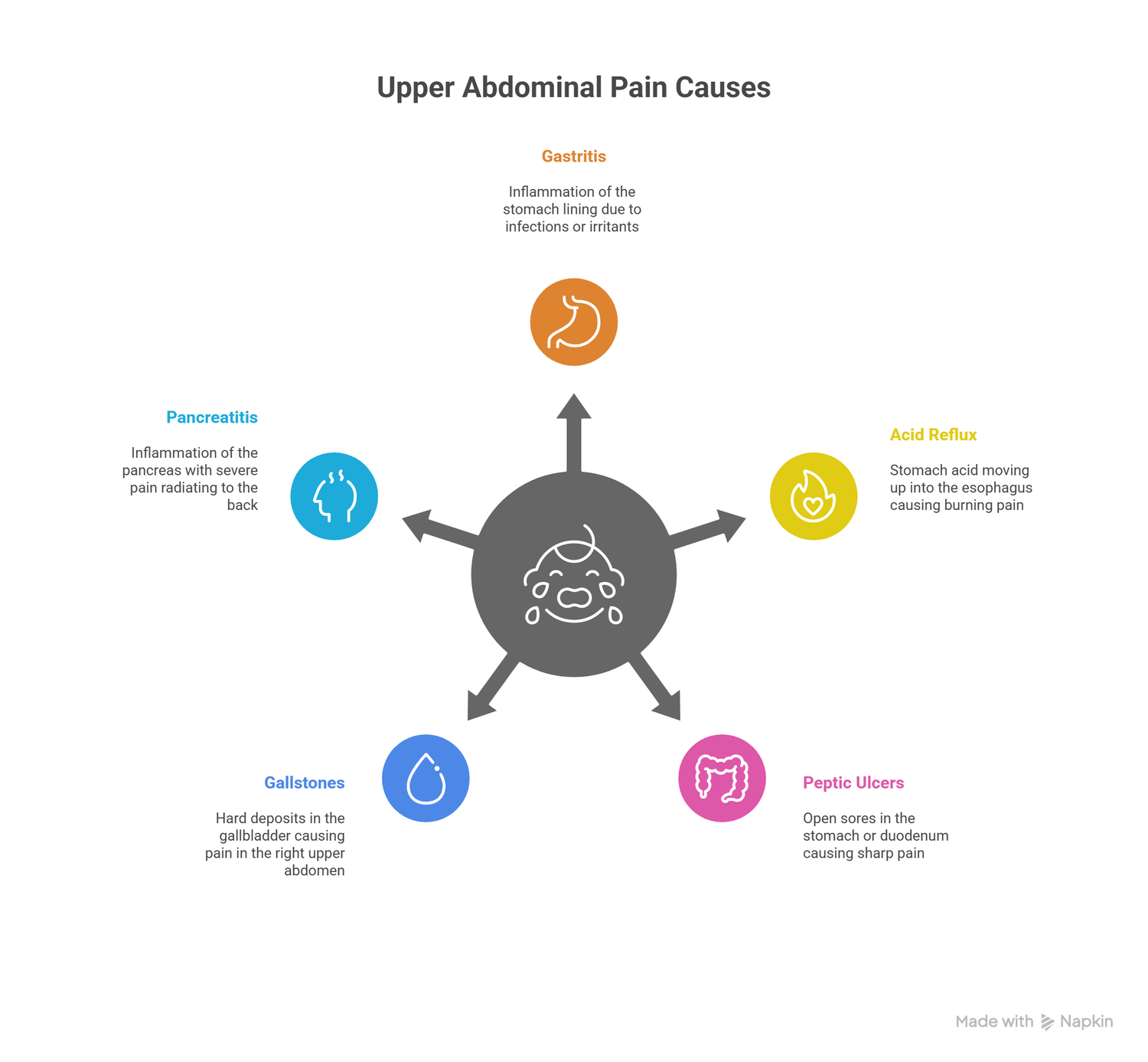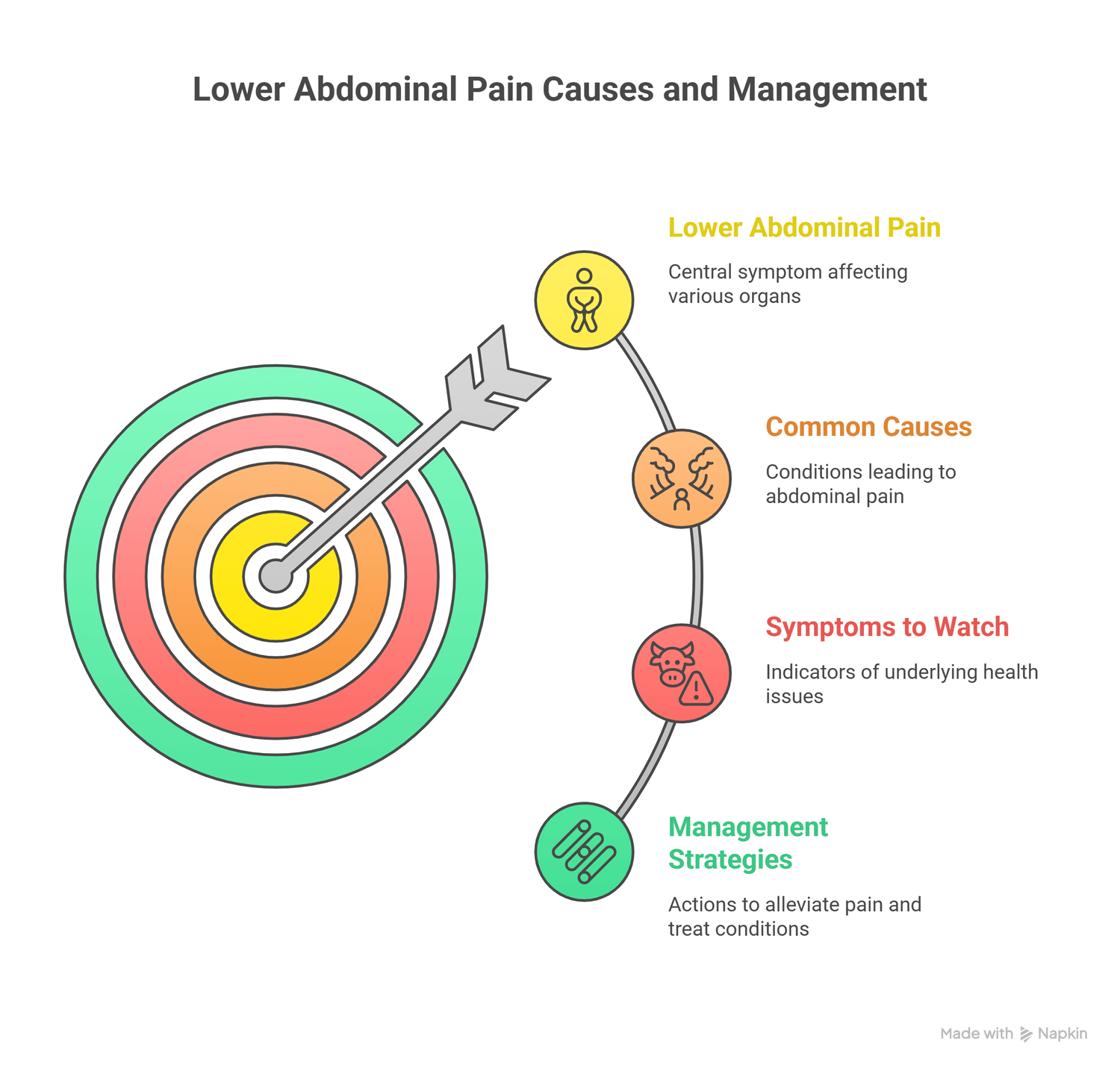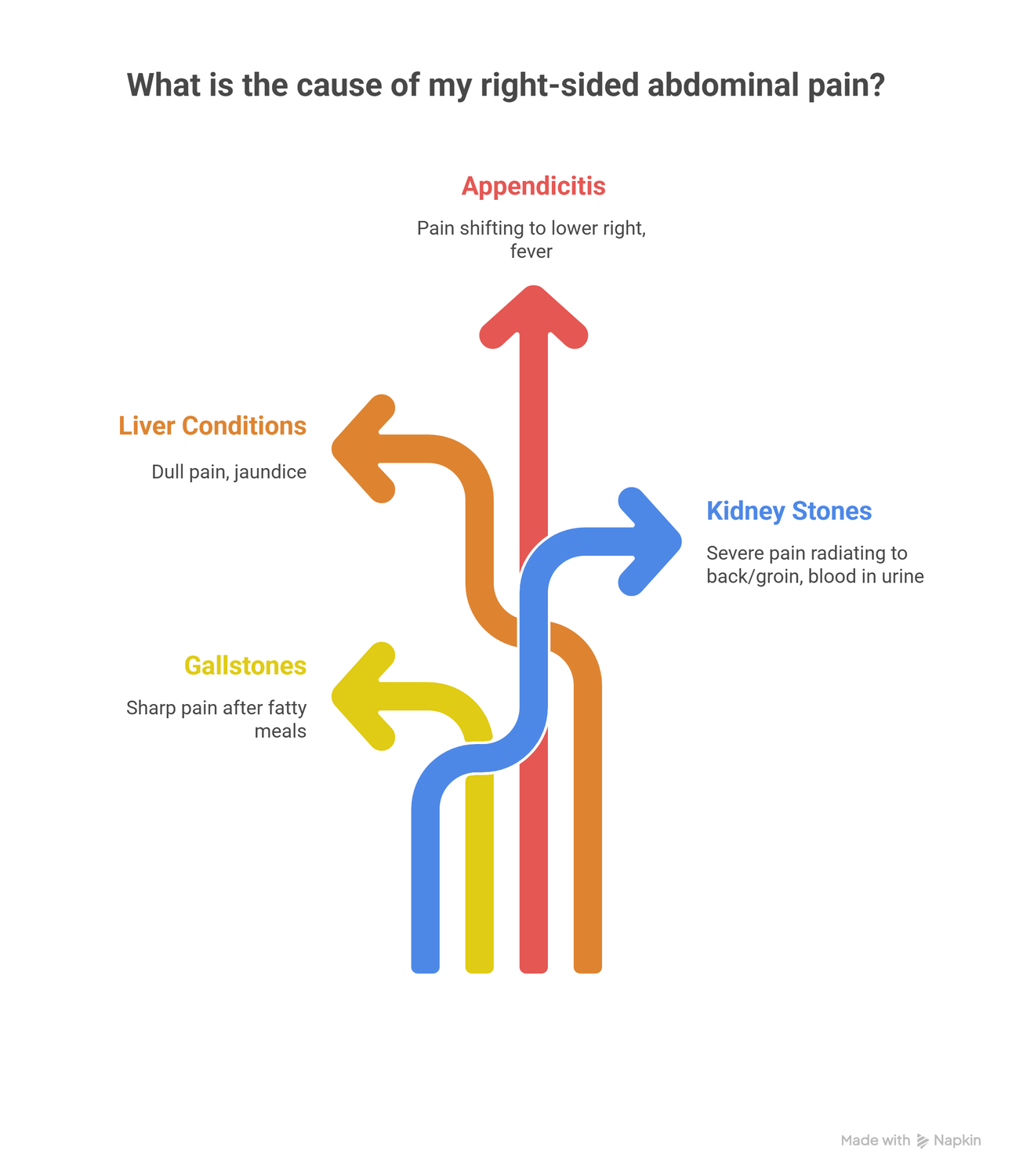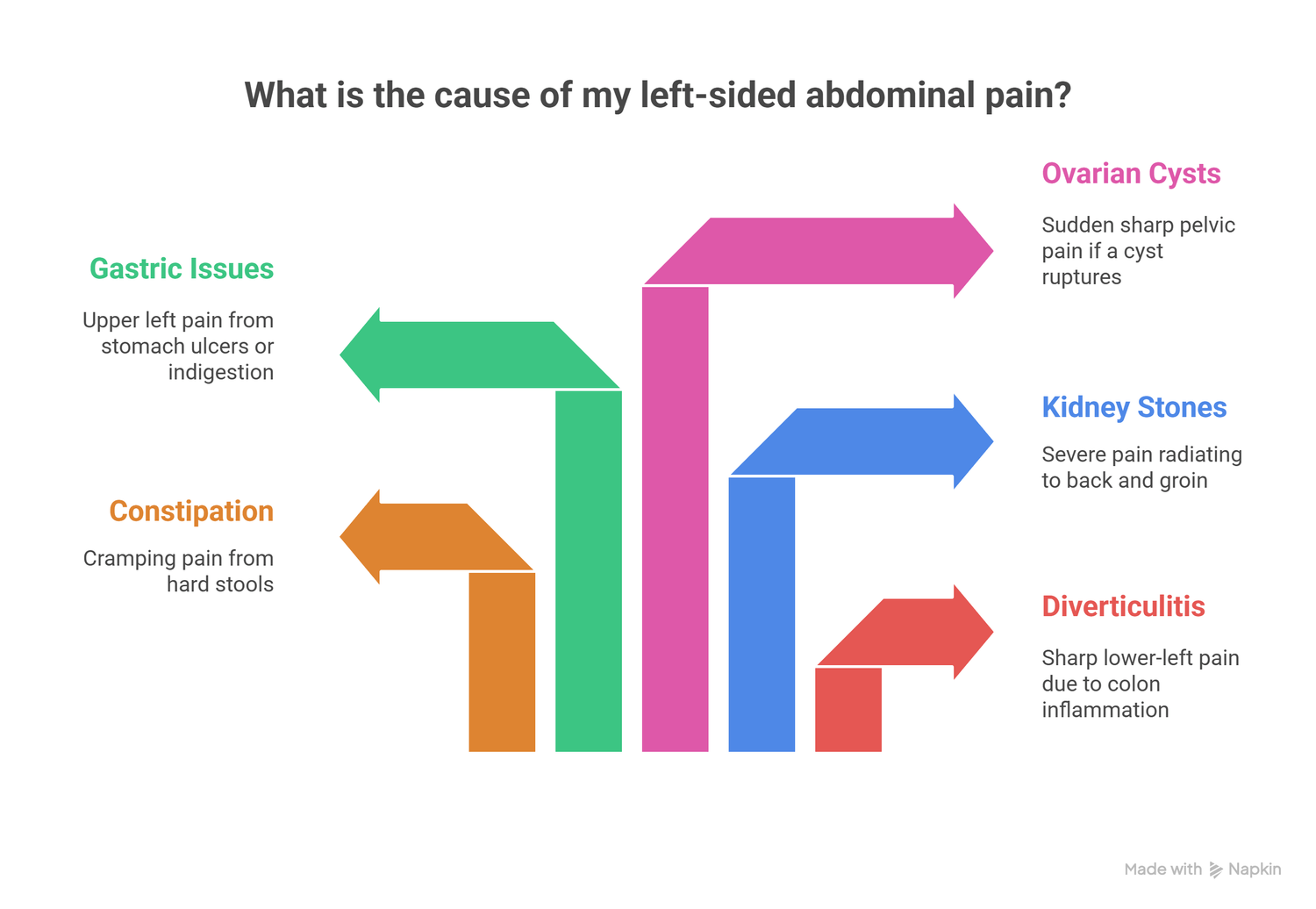
Is Your Stomach Pain Serious? The 4 Types to Watch
The 4 Types of Stomach Pain: Causes, Symptoms & When to Worry
Introduction
Almost everyone experiences stomach pain at some point in life.
Sometimes it’s harmless, like bloating after a heavy meal, but other times it may signal an underlying health issue.
Understanding the different types of stomach pain can help you know when to manage it at home and when to seek medical advice.
Doctors often classify stomach pain into four main types based on its location and pattern:
upper abdominal pain,
lower abdominal pain
, right-sided abdominal pain,
and left-sided abdominal pain.
Each type has different causes, symptoms, and possible treatments.
In this article, we’ll explore the four types of stomach pain, their common causes, and tips for relief, using simple but medically accurate information.
1. Upper Abdominal Pain
Location:
Above the belly button, around the stomach, liver, and pancreas.
Common Causes:
Gastritis – Inflammation of the stomach lining often due to infections (like H. pylori), alcohol, or NSAIDs.
Acid Reflux (GERD) – Stomach acid moving up into the esophagus, causing burning pain.
Peptic Ulcers – Open sores in the stomach or duodenum causing sharp or burning pain.
Gallstones – Hard deposits in the gallbladder causing pain in the right upper abdomen.
Pancreatitis – Inflammation of the pancreas with severe pain that radiates to the back.
Symptoms to Watch:
Burning or gnawing sensation after eating
Pain radiating to the chest or back
Nausea, vomiting, or bloating
Indigestion or early satiety (feeling full quickly)
Management:
Avoid spicy and fatty foods, alcohol, and caffeine.
Eat smaller, more frequent meals.
Antacids or acid-reducing medications may help, but persistent pain needs medical evaluation.

2. Lower Abdominal Pain
Location:
Below the belly button, around the intestines, bladder, and reproductive organs.
Common Causes:
Irritable Bowel Syndrome (IBS) – Cramping and bloating, often relieved after a bowel movement.
Urinary Tract Infections (UTIs) – Burning pain with urination, pelvic discomfort.
Appendicitis – Severe pain starting near the belly button and moving to the lower right side.
Menstrual Cramps (Dysmenorrhea) – Painful cramping in women during menstruation.
Endometriosis – Growth of uterine tissue outside the uterus causing chronic pelvic pain.
Symptoms to Watch:
Cramping or sharp pain
Diarrhea, constipation, or bloating
Pain with urination or during menstrual cycles
Fever or sudden worsening pain (appendicitis warning)
Management:
Stay hydrated and eat fiber-rich foods for digestive health.
Use heating pads for cramps.
Antibiotics for UTIs (as prescribed).
Seek urgent care if pain is severe or accompanied by fever and nausea.

3. Right-Sided Abdominal Pain
Location:
Right side of the abdomen (upper or lower).
Common Causes:
Gallstones (Cholelithiasis) – Sudden sharp pain in the upper right side, often after fatty meals.
Liver Conditions – Hepatitis or fatty liver may cause dull right-sided pain.
Appendicitis – Starts in the middle abdomen and shifts to the lower right, with tenderness and fever.
Kidney Stones – Severe cramping pain radiating to the back or groin.
Symptoms to Watch:
Sharp or stabbing pain after meals
Fever, nausea, or vomiting
Yellowing of eyes/skin (jaundice, liver issue)
Blood in urine (possible kidney stone)
Management:
Limit high-fat foods for gallbladder health.
Stay hydrated to prevent kidney stones.
Medical evaluation is necessary if pain is severe or sudden.

4. Left-Sided Abdominal Pain
Location:
Left side of the abdomen (upper or lower).
Common Causes:
Diverticulitis – Inflammation of small pouches in the colon, causing sharp lower-left pain.
Constipation – Hard stools causing cramping pain.
Kidney Stones (Left side) – Severe pain radiating to back and groin.
Gastric Issues – Upper left pain may be linked to stomach ulcers or indigestion.
Ovarian Cysts (in women) – Sudden sharp pelvic pain if a cyst ruptures.
Symptoms to Watch:
Localized sharp pain on the left side
Bloating, gas, or constipation
Pain with fever and chills (possible infection)
Pain during ovulation or menstruation (in women)
Management:
High-fiber diet to prevent constipation and diverticulitis.
Hydration to reduce kidney stone risk.
Medical evaluation if pain is severe or recurring.

When to See a Doctor
While many causes of stomach pain are mild, some can be serious.
Seek medical attention if you experience:
Severe, sudden, or worsening pain
Pain with fever, nausea, or vomiting
Blood in stool or vomit
Yellowing of eyes or skin
Pain lasting more than a few days
Tips for Maintaining Digestive Health
Eat a balanced diet rich in fruits, vegetables, lean proteins, and whole grains.
Stay hydrated (8 glasses of water daily).
Avoid overeating and limit fatty, spicy, and processed foods.
Practice stress management, as stress can worsen digestive pain.
Exercise regularly to support gut motility.
Conclusion
Stomach pain can be confusing because it has many possible causes.
The four main types of stomach pain—upper, lower, right-sided, and left-sided— each point to different conditions.
While mild cases may resolve with lifestyle changes, persistent or severe pain should never be ignored.
By understanding the type and location of your abdominal pain, you can take steps toward better digestive health and know when it’s time to seek professional medical advice.
